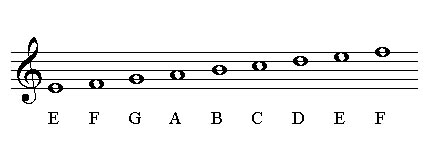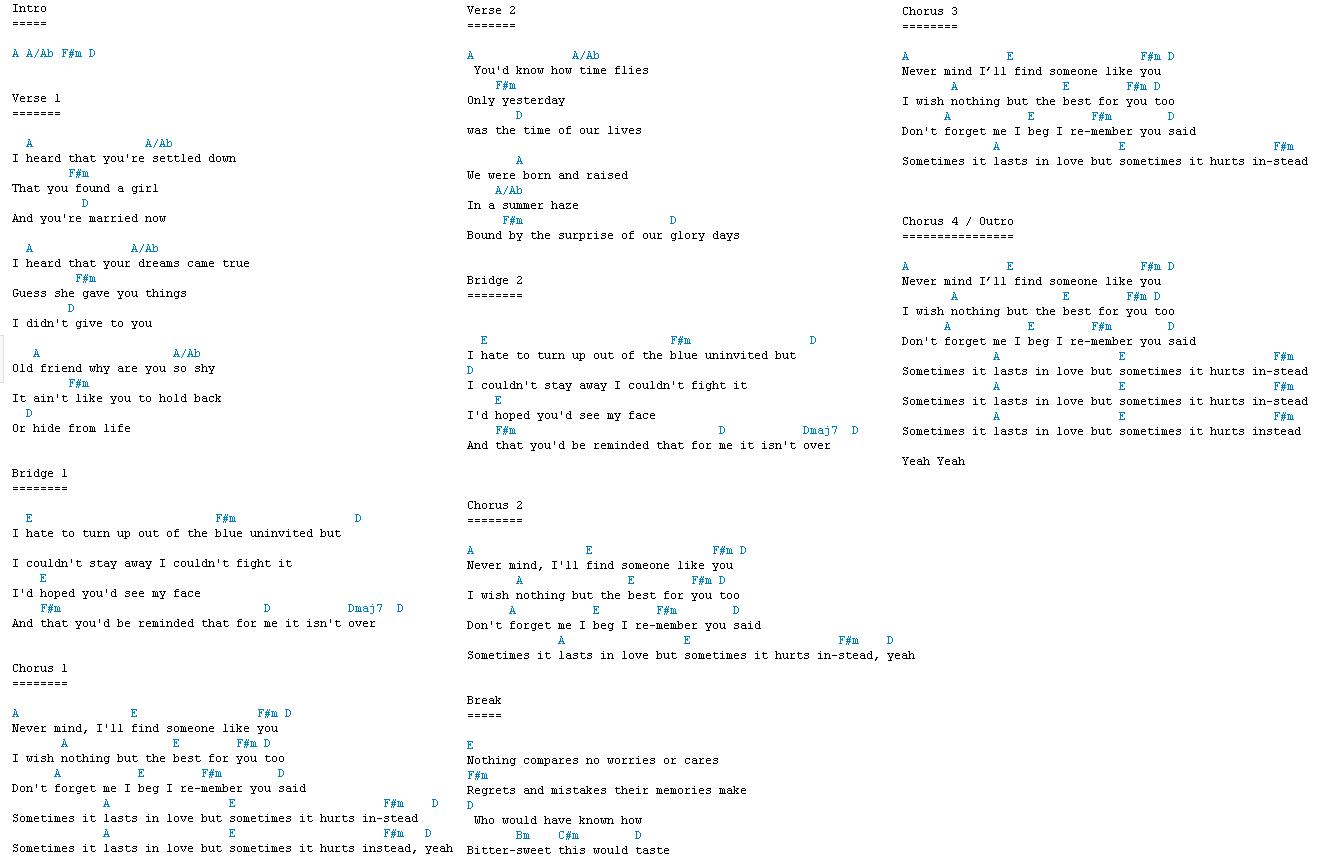Three Different Ways to Organize Pitch
Author Bonnie Wade states, “...pitch is the fundamental element in both melody and harmony, and ideas about pitch need to be explored in order to understand how melody and harmony are cultivated in different traditions”(100). In most musical traditions, melodies are passed down using some form of notation in order to preserve the song for future generations. Distinct cultures around the world utilize individual sets of pitches that fit into their respective scales. “For communication about music and as an aid to memory, it is convenient to assign names to pitches”(102). Assigning names to pitches in the form of syllables, numbers, and letters aid in helping students how to sight sing and learn new material altogether.
Around 1015 A.D, Guido d’Arezzo devised a system that would help aid singers in Italy where he lived. The idea was to assign specific syllables to each diatonic pitch within a scale, so singers would have an easier time locating half steps between the third and fourth scale degrees and the seventh to tonic scale degrees. This concept was indeed successful in creating a long lasting impact on music education. In this classroom, young students used solfege as an ear training tool as illustrated in this video.
Another benefit of solfege is it teaches students to think in terms of scale degrees instead of note names which makes it easier for them when it comes time to change keys.

Although solfege does benefit music education, there are disadvantages to using this system. “Each syllable has been chosen to make it easy to pronounce while singing it. However, this means that it can take you quite some time to become really comfortable with all the syllables” (EarTrainingHQ.com). If a teacher does not give students adequate time to learn the syllables, then solfege ultimately becomes more of a hassle than a help. There are two different classifications of solfege, Moveable-Do and Fixed-Do. In the context of Moveable-Do the pitch of “Do” can be changed, but in Fixed-Do the pitch of “Do” stays the same no matter the key. Having these two systems can easily confuse the learner and create a need for clarification, which would make having one system instead of two more understandable.
Although some teaching techniques prefer solfege, others recognize numbers as a convenient way to “indicate pitch” (Wade, 103). Both techniques teach students how to identify pitch by creating a relationship between a specific pitch/scale degree and a word or syllable. After learning the solfege system, students are able to associate a syllable as higher or lower than another syllable. For example, a trained student would recognize “mi” as being higher than “re” while a new student would be unable to understand that concept. Unlike solfege, numbers are a part of a student’s vocabulary before any study of music occurs. Therefore, there is an immediate connection made in realizing that a higher number indicates a higher pitch. Since this connection can be made fairly quickly, the time it would have taken to teach a student the solfege system could be “used to teach other musical concepts” (debate.org, “Sight-Singing Solfege vs. Numbers). For instance, singing this vocal warm up would be much easier than singing this vocal warm up for new students since most students have at least some prior experience with numbers. While numbering scale degrees is a less complicated way to indicate pitch, numbers are also often used for rhythmic purposes, volume, and roman numeral analysis. This crossover could become problematic if a student were to confuse the counting system when describing pitches or vice versa. Although this crossover could be confusing, the numbering system can be integrated when studying music theory such as roman numeral analysis. Numbers directly correlate with roman numeral chords as shown below. Future theory students would benefit from this correlation because they could more easily recognize that the tonic chord, or I chord, is built off of scale degree 1 and the ii chord is built off of scale degree 2.



Around 1015 A.D, Guido d’Arezzo devised a system that would help aid singers in Italy where he lived. The idea was to assign specific syllables to each diatonic pitch within a scale, so singers would have an easier time locating half steps between the third and fourth scale degrees and the seventh to tonic scale degrees. This concept was indeed successful in creating a long lasting impact on music education. In this classroom, young students used solfege as an ear training tool as illustrated in this video.
Another benefit of solfege is it teaches students to think in terms of scale degrees instead of note names which makes it easier for them when it comes time to change keys.
Although solfege does benefit music education, there are disadvantages to using this system. “Each syllable has been chosen to make it easy to pronounce while singing it. However, this means that it can take you quite some time to become really comfortable with all the syllables” (EarTrainingHQ.com). If a teacher does not give students adequate time to learn the syllables, then solfege ultimately becomes more of a hassle than a help. There are two different classifications of solfege, Moveable-Do and Fixed-Do. In the context of Moveable-Do the pitch of “Do” can be changed, but in Fixed-Do the pitch of “Do” stays the same no matter the key. Having these two systems can easily confuse the learner and create a need for clarification, which would make having one system instead of two more understandable.
Although some teaching techniques prefer solfege, others recognize numbers as a convenient way to “indicate pitch” (Wade, 103). Both techniques teach students how to identify pitch by creating a relationship between a specific pitch/scale degree and a word or syllable. After learning the solfege system, students are able to associate a syllable as higher or lower than another syllable. For example, a trained student would recognize “mi” as being higher than “re” while a new student would be unable to understand that concept. Unlike solfege, numbers are a part of a student’s vocabulary before any study of music occurs. Therefore, there is an immediate connection made in realizing that a higher number indicates a higher pitch. Since this connection can be made fairly quickly, the time it would have taken to teach a student the solfege system could be “used to teach other musical concepts” (debate.org, “Sight-Singing Solfege vs. Numbers). For instance, singing this vocal warm up would be much easier than singing this vocal warm up for new students since most students have at least some prior experience with numbers. While numbering scale degrees is a less complicated way to indicate pitch, numbers are also often used for rhythmic purposes, volume, and roman numeral analysis. This crossover could become problematic if a student were to confuse the counting system when describing pitches or vice versa. Although this crossover could be confusing, the numbering system can be integrated when studying music theory such as roman numeral analysis. Numbers directly correlate with roman numeral chords as shown below. Future theory students would benefit from this correlation because they could more easily recognize that the tonic chord, or I chord, is built off of scale degree 1 and the ii chord is built off of scale degree 2.
“In the European system, letters as well as syllables and numbers are used for identifying pitches”(Wade 103). Many people in Europe and America who play instruments are well aware of the letters used to indicate pitch. These letters in ascent are A,B,C,D,E,F, and G. This system was adopted from the Romans, who learned it from the Greeks. Here is an example of ancient Greek notation, where each specific letter corresponds with a pitch:
This system can be extremely useful in the teaching and playing of instrumental music. Music teachers can use these letters to teach students how to read the musical staffs. Reading music using these staffs is the most common way of reading music in Europe and America. If students are able to memorize the letter of each note on the staff and the corresponding note on their instrument, they can play any piece of sheet music after practicing it repeatedly. The treble clef, also known as the “G” clef, is one of the most common clefs used in music notation. Below is a picture of the treble clef which depicts the letters that correspond with each note on the staff.
Another way letters are used to teach music is by teaching chords. For example, if you teach a student how to play a C chord on guitar, the student will be able play any C chord in any song. Listen to the piano part in the song, “Someone Like You” by Adele:
This popular song repeats the same pattern on piano over and over again. The only thing that changes are the chords. By learning the different chords in the song on the piano, a musician could play that exact song just by looking at this chord sheet:
In this chord sheet, the musician is given only the lyrics and chords. And yet, this is still enough information for them to read and play the music sufficiently. This method of reading and playing music is especially helpful to guitar-like instruments, or instruments that mostly play chords.
Despite various differences in naming pitches, the act of assigning names to notes has proven to be very successful in terms of music education. Each method has its own disadvantages, however the advantages of assigning letters, numbers, and syllables to pitches have proven to be primarily beneficial when educating students in the art of music.
Intro/Conclusion: Anika Hille
Solfege: Frank Saxton
Numbers: Emilia Soot
Letters/Bibliography/Blog: Mackenzie Taylor
Works Cited
1 121 / Do Do Re Do Warm up. YouTube. Triad Power TV, n.d. Web.
1 121 12321 Warm up in C Major. YouTube. Triad Power TV, n.d. Web.
Chords for Someone Like You. Digital image. Awesome Guitar Tabs. N.p., n.d. Web.
Greek Note System. Digital image. Music Portal. N.p., n.d. Web.
Scale Degree Chart. Digital image. Learn Music Free. N.p., n.d. Web.
"Sight-Singing SOLFEGE VS. NUMBERS." Online Debate: Sight-Singing SOLFEGE VS. NUMBERS | Debate.org. N.p., n.d. Web.
Someone Like You. YouTube. N.p., n.d. Web.
Treble Clef with Note Names. Digital image. People.vcu.edu. N.p., n.d. Web.
TW Yamaha Lesson - Singing Solfege. YouTube. SH Chan, n.d. Web.
Comments
Post a Comment